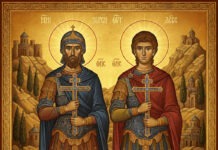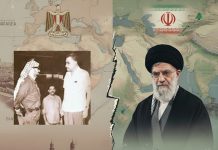الإيرانيون والحنين إلى زمن الشاه
عبد الرحمن الراشد/الشرق الأوسط/15 شباط/15
منذ عام 1980 والإيرانيون في كل سنة يحتفلون بذكرى ثورة الخميني، لكن مع مرور كل سنة يزداد عدد الكافرين بالثورة والمؤمنين بأنها كانت أعظم نكسة تاريخية في حياة إيران. عاما بعد عام، والمزيد من السياسيين والمثقفين، الذين كانوا جزءا من الثورة، أو ساندوها، يعيدون تقييم التجربة ضمن عودة الوعي التي تصاحب عادة الثورات أو التغييرات الفاشلة.
وفي هذه الأيام، حيث تحتفل الجمهورية الإسلامية الإيرانية بمرور 36 عاما على إسقاط الشاه، انضمت شخصية إيرانية إلى مجموعة المتراجعين، وهو محسن سازكارا، أحد الذين شاركوا في تأسيس الحرس الثوري، الذي كان، ولا يزال، نخبة القوة العسكرية للثورة، والأكثر سلطة واطلاعا. يتحدث بحسرة، بأنه لو عاد به الزمن لما شارك في الثورة، وأن إسقاط نظام الشاه كان خطأ نتيجته مكلفة للشعب الإيراني. ومعظم المتراجعين، مثله، متقاعدون، ليسوا طلاب مناصب، ولا طرفا في النزاع السياسي، بل بحكم العمر يتأملون المشهد ويقيمونه من تجربتهم، ومن المحصلة التي آلت إلى ما آلت إليه إيران اليوم.
ولا شك بأن أي مؤرخ منصف سيجد في حكم الشاه كثيرا من الخلل والإخفاقات، لكنه أيضا جعل من إيران، حتى سقوطه في السبعينات، أكثر دول منطقة الشرق الأوسط تطورا ونجاحا، مقارنة بالخليج ومصر وتركيا وباكستان. جعل بلاده قوة صناعية وعسكرية، ومركزا علميا متفوقا، وكانت دول المنطقة تنظر إلى طهران على أنها النموذج الحضاري. لكن معظم هذا التاريخ قام المتحمسون من الثوار، من اليسار ومتطرفي الإسلاميين، بمسحه، وإعادة كتابته كما فعل ماو تسي تونغ في الصين، والبلاشفة في روسيا.
وفي مواجهة الحنين المتزايد إلى زمن الشاه يحاول محامو الثورة والمؤمنون بها، ليس تزوير الماضي القريب، لأن ذلك لم يعد يجدي نفعا بسبب تفعيل الذاكرة الحية، ولا يزال ملايين من مواطني العهد الشاهنشاهي أحياء، بل صاروا يلتمسون العذر لإخفاقات 36 سنة ماضية في مجالات التنمية والمعيشة والحريات وغيرها. بقايا الثوار يعلقون فشلهم على الغرب و«المنافقين»؛ أي المعارضة، وهذه الأعذار المستهلكة لم تعد مقنعة للشعب، خصوصا أن النظام يبشر ويطمئن جمهوره أنه يفاوض الغرب وهو على وشك التصالح مع خصومه! الحرية والديمقراطية وتحسين المعيشة والتخلص من التبعية الغربية، كانت شعارات المتظاهرين الداعين لإسقاط الشاه في شوارع طهران وميادينها. اليوم، وبعد 3 عقود ونصف، لم يتحقق منها شيء، بل ساءت أوضاع الإيرانيين عما كانت عليه في زمن الشاه؛ نقص هامش الحرية السياسي، وطغت القيود الاجتماعية، واختصرت الانتخابات البرلمانية والرئاسية فقط على الإسلاميين، وسجن الخصوم، ولم تعد هناك أحزاب سوى المنتمية للنظام، بأسوأ مما كان الوضع عليه أيام الشاه. تراجعت مستويات المعيشة، وعم البؤس، وتحولت طهران وبقية المدن الكبرى إلى ما يشبه الأطلال، مجرد بقايا مما بناه الشاه. وبعد مسيرته الثورية الطويلة انقلب نظام ولاية الفقيه السياسي على كل شعاراته، ها هو يستجدي العلاقة مع الولايات المتحدة، يريد من وزارة الخزانة السماح له باستخدام الدولار في صرف وتحويلات الريال، ومن الكونغرس السماح له باستخدام التقنية لاستكشاف البترول وإنتاجه!
عمليا، لم تعد في إيران ثورة، مجرد نظام سياسي أمني قمعي آخر، أشد قسوة مما كان عليه نظام الشاه. والأمل الوحيد الذي بقي للحكومة والإيرانيين هو تحقيق المصالحة مع الغرب والانفتاح على العالم، كما سبقتهم إلى ذلك فيتنام وكوبا والصين وروسيا.
Iranians and nostalgia for the Shah’s era
Abdulrahman al-Rashed/Al Arabiya
Sunday, 15 February 2015
Ever since 1980, Iranians have celebrated Khomeini’s revolution every year. However, as time passed, the number of people who reject the revolution and who believe it was the worst historical setback in the history of Iran has increased. Year after year, more politicians and intellectuals who were involved in the revolution or supported it began to re-evaluate the experience within the context of restoring consciousness – an act which usually follows revolutions or failed changes.
As the Iranian Islamic Republic now celebrates the 36th anniversary of toppling the Shah, another prominent Iranian figure joins the ranks of those who speak out against the revolution. It’s Mohsen Sazegara, one of those who participated in establishing the revolutionary guards which were and still are the military elite of the revolution and remain the most powerful and influential forcey in the country. Sazegara regretfully said if he could go back in time, he wouldn’t have participated in the revolution, adding that toppling the Shah’s regime was a mistake which the Iranians paid a high price for. Most of those who changed their minds about the revolution are like him – retired men who don’t seek attaining any high-ranking posts and are not part of the political struggle. They are simply aged men who can observe the entire scene and evaluate it based on their experience and according to the end result of Iran’s current situation.
Any fair historian will certainly see how there were many defects and failures during the Shah’s rule. But the Shah – until his collapse in the 1970s – managed to turn Iran into one of the most developed and successful countries in the Middle East – compared to the Gulf, Egypt, Turkey and Pakistan. He turned the country into an industrial and military power and an excellent scientific center. The region’s countries thus viewed Tehran as a civilized model. However, zealot revolutionaries, from the leftist movement and extremist Islamists, deleted most of this history and rewrote it like Mao Tse-Tung did in China and the Bolsheviks in Russia.
To confront this increased nostalgia to the Shah’s era, those who defend the revolution and who believe in it no longer try to forge recent history. This no longer works, considering the people’s memory has been revived and that the millions of people who lived through in Shah’s era are actually still alive.
Excuses and blame
They therefore try to make up excuses for the failures of the past 36 years in the fields of development, living conditions, freedom and others. The remaining revolutionaries are blaming the West and the “hypocrites,” i.e. the opposition, for their failure.
These excuses no longer convince the people, especially that the regime reassures its audience that it’s negotiating with the West and is about to reconcile with its rivals! Freedom, democracy, improving livelihood and becoming independent from the West were the slogans of protesters calling for toppling the Shah in Tehran and its squares.
Today, three and a half decades on, none of these demands have been met. The circumstances Iranians are living today are actually worse than how it was during the Shah’s reign. The margin of political freedom has decreased and social restrictions dominated. Parliamentary and presidential elections have been limited to Islamists, rivals have been jailed and the only parties present are those who are affiliated with the regime. The situation is thus worse than it was when the Shah was around. The livelihood situation regressed, misery reigned and Tehran and the rest of major cities were transformed into remains of a city – just mere remains of what the Shah built. After its long revolutionary path, the political regime of velayat-e faqih turned against all its slogans as it is seeking relations with the United States and wants the American treasury to allow it to use the dollar in the rial exchange and remittance and wants the U.S. Congress to allow it to use technology for oil exploration and production!
Practically speaking, there’s no revolution in Iran anymore. There’s just another repressive, security and political regime which is crueler than the Shah’s. The only hope which the government and the Iranians have left is to achieve reconciliation with the West and become open to the world, like Vietnam, Cuba, China and Russia have done before them.





















